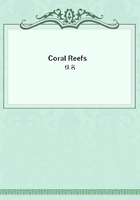
第38章
The Nulliporae are now encroaching on the Porites and Millepora, but in this case might we not confidently expect that the latter would, in their turn, encroach on the Nulliporae? After a subsidence of this kind, the sea would gain on the islets, and the great fields of dead but upright corals in the lagoon, would be covered by a sheet of clear water; and might we not then expect that these reefs would rise to the surface, as they anciently did when the lagoon was less confined by islets, and as they did within a period of ten years in the schooner-channel, cut by the inhabitants? In one of the Maldiva atolls, a reef, which within a very few years existed as an islet bearing cocoa-nut trees, was found by Lieutenant Prentice "ENTIRELY COVERED WITH LIVE CORAL AND MADREPORE." The natives believe that the islet was washed away by a change in the currents, but if, instead of this, it had quietly subsided, surely every part of the island which offered a solid foundation, would in a like manner have become coated with living coral.
Through steps such as these, any thickness of rock, composed of a singular intermixture of various kinds of corals, shells, and calcareous sediment, might be formed; but without subsidence, the thickness would necessarily be determined by the depth at which the reef-building polypifers can exist.
If it be asked, at what rate in years I suppose a reef of coral favourably circumstanced could grow up from a given depth; I should answer, that we have no precise evidence on this point, and comparatively little concern with it. We see, in innumerable points over wide areas, that the rate has been sufficient, either to bring up the reefs from various depths to the surface, or, as is more probable, to keep them at the surface, during progressive subsidences; and this is a much more important standard of comparison than any cycle of years.
It may, however, be inferred from the following facts, that the rate in years under favourable circumstances would be very far from slow. Dr.
Allan, of Forres, has, in his MS. Thesis deposited in the library of the Edinburgh University (extracts from which I owe to the kindness of Dr.
Malcolmson), the following account of some experiments, which he tried during his travels in the years 1830 to 1832 on the east coast of Madagascar. "To ascertain the rise and progress of the coral-family, and fix the number of species met with at Foul Point (latitude 17 deg 40') twenty species of coral were taken off the reef and planted apart on a sand-bank THREE FEET DEEP AT LOW WATER. Each portion weighed ten pounds, and was kept in its place by stakes. Similar quantities were placed in a clump and secured as the rest. This was done in December 1830. In July following, each detached mass was nearly level with the sea at low water, quite immovable, and several feet long, stretching as the parent reef, with the coast current from north to south. The masses accumulated in a clump were found equally increased, but some of the species in such unequal ratios, as to be growing over each other." The loss of Dr. Allan's magnificent collection by shipwreck, unfortunately prevents its being known to what genera these corals belonged; but from the numbers experimented on, it is certain that all the more conspicuous kinds must have been included.
Dr. Allan informs me, in a letter, that he believes it was a Madrepora, which grew most vigorously. One may be permitted to suspect that the level of the sea might possibly have been somewhat different at the two stated periods; nevertheless, it is quite evident that the growth of the ten-pound masses, during the six or seven months, at the end of which they were found immovably fixed (It is stated by De la Beche ("Geological Manual," page 143), on the authority of Mr. Lloyd, who surveyed the Isthmus of Panama, that some specimens of Polypifers, placed by him in a sheltered pool of water, were found in the course of a few days firmly fixed by the secretion of a stony matter, to the bottom) and several feet in length, must have been very great. The fact of the different kinds of coral, when placed in one clump, having increased in extremely unequal ratios, is very interesting, as it shows the manner in which a reef, supporting many species of coral, would probably be affected by a change in the external conditions favouring one kind more than another. The growth of the masses of coral in N. and S. lines parallel to the prevailing currents, whether due to the drifting of sediment or to the simple movement of the water, is, also, a very interesting circumstance.
A fact, communicated to me by Lieutenant Wellstead, I.N., in some degree corroborates the result of Dr. Allan's experiments: it is, that in the Persian Gulf a ship had her copper bottom encrusted in the course of twenty months with a layer of coral, TWO FEET in thickness, which it required great force to remove, when the vessel was docked: it was not ascertained to what order this coral belonged. The case of the schooner-channel choked up with coral in an interval of less than ten years, in the lagoon of Keeling atoll, should be here borne in mind. We may also infer, from the trouble which the inhabitants of the Maldiva atolls take to root out, as they express it, the coral-knolls from their harbours, that their growth can hardly be very slow. (Mr. Stutchbury ("West of England Journal", No.